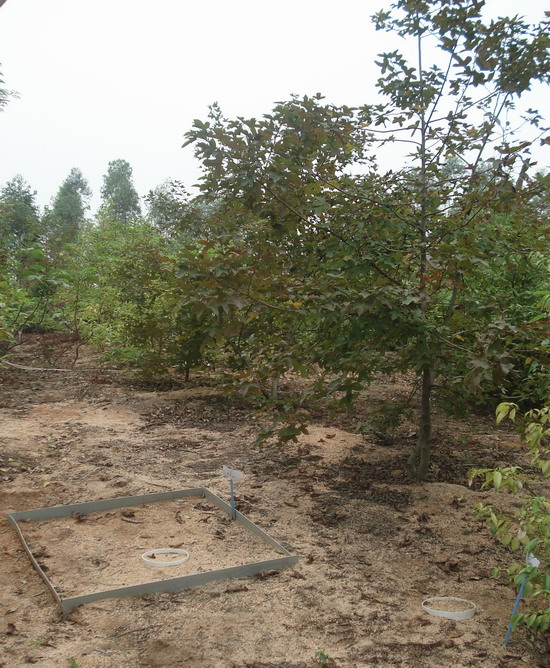

The effects of forest management on soil respiration in forest plantations are crucial to both our understanding and management of global carbon flux. In newly established mixed plantations of native species, understory plants can reach as high as 1 m and cover most ground surface in southern China. The understory vegetation removal can reduce the competition between canopy species and understory species.
Dr. WANG Xiaoling and Prof. FU Shenglei from South China Botanical Garden, investigated soil respiration and environment factors after understory was removal or replaced by the shrub Cassia alata. The study was conducted at Heshan Hilly Land Interdisciplinary Experimental Station where a large-scale and long-term manipulative experiment has been carried out since 2005. They found understory removal reduced soil respiration rate and soil moisture but increased soil temperature. Annual soil respiration was decreased by 6%. The results also indicate that management of understory species increased the contribution of root respiration to soil respiration.
This work has been published in an international journal in forestry field, Forest Ecology and Management (2011, 261: 1053-1060).

Understory vegetation in newly established native plantations, dominated by Dicranopteris dichotoma

Trenched plot for measuring heterotrophic respiration in the treatment of understory removal

